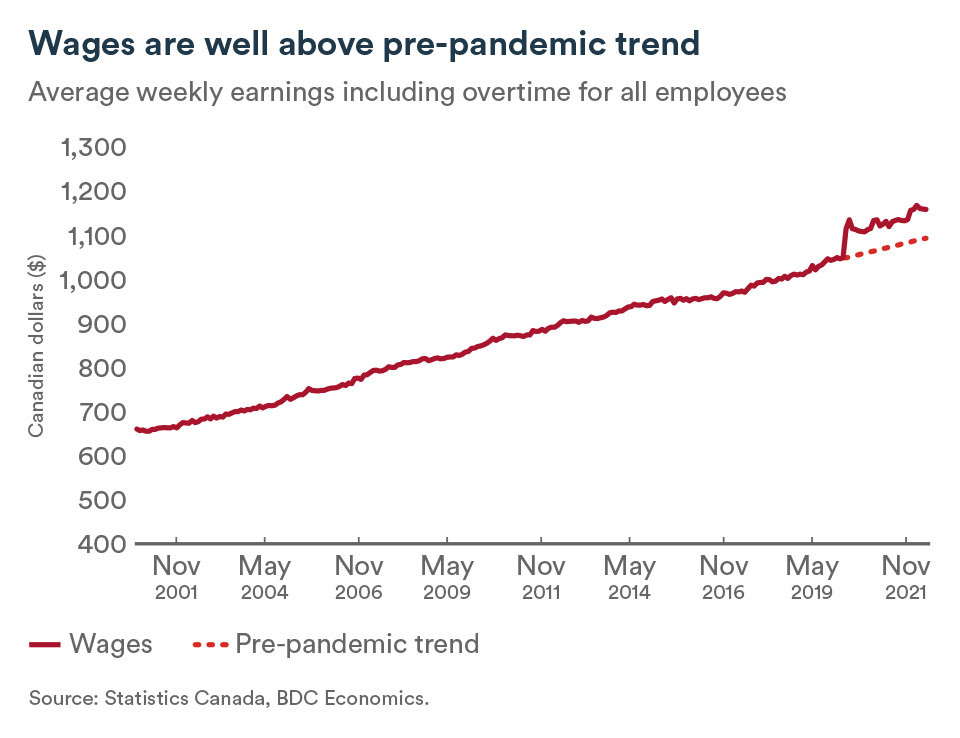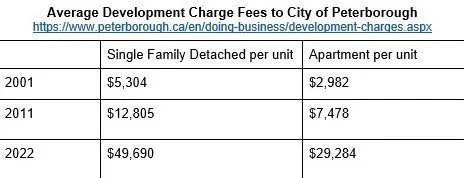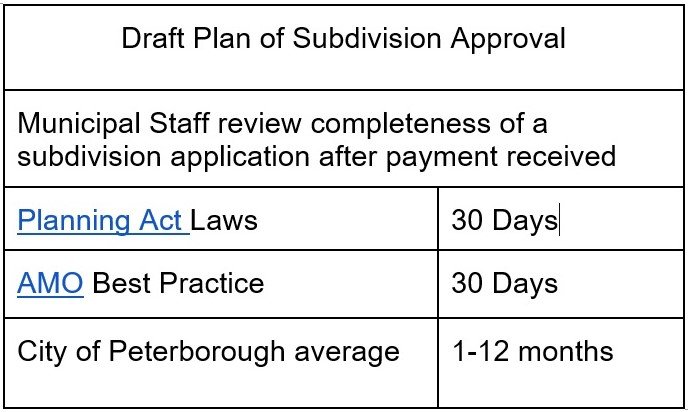Peterborough Blogs
Voice of Business: Business Supports Help Our Region Recover Together
/As our economy shifts into recovery mode so have the funding lifelines.
We’ve moved from emergency funding to get through shutdowns to investing in what our businesses need to deal with current challenges and position them for the future.
Here is a brief rundown of some of the programs available:
Talent Opportunities Program (Up to $7,000)
Are you an employer hiring post-secondary students on work-integrated learning (WIL) placements, such as cooperative education and internships? If so, you may be eligible for a wage subsidy of up to $7,000 per student!
The Talent Opportunities Program (TOP) is an initiative of the Ontario Chamber of Commerce designed to help employers located anywhere in Canada hire college and university students on WIL placements. Employers hiring eligible students may receive a wage subsidy up to 50% of the wages (to a maximum of $5,000) for each ‘net new’ placement or 70% of the wages (to a maximum of $7,000) for each ‘net new’ placement for the following under-represented groups: Indigenous people, person with disabilities, newcomer to Canada, first year student, visible minority and/or women in STEM.
https://occ.ca/talent-opportunities-program/
Grow Your Business Online Grant (Up to $2,400)
As part of the Canada Digital Adoption Program, the Government of Canada has partnered with the Ontario Chamber of Commerce to deliver the Grow Your Business Online grant.
Through this program, small business owners can receive a micro-grant worth up to $2,400 to help get their business online, give their e-commerce presence a boost, or digitalize business operations. Grant recipients must commit to maintaining their digital adoption strategy for at least six months.
https://occ.ca/growyourbusinessonline/
Boost Your Business Technology (Up to $15,000 + 0% loan)
Eligible businesses can leverage the grant to pay for the services of a digital advisor. These advisors will work with companies to recommend digital pathways and strategies that will help them achieve their business goals and increase their competitiveness in the digital economy.
The grant covers up to 90% of the eligible cost of retaining the services of a digital advisor, up to a maximum grant value of $15,000 per SME, to develop a digital adoption plan.
Businesses also have the opportunity to secure a 0% interest loan from the Business Development Bank of Canada (BDC) to facilitate the acquisition of new technology. In addition, applicants can leverage the help of talented post-secondary students and recent graduates through subsidized work placements.
https://ised-isde.canada.ca/site/canada-digital-adoption-program/en/boost-your-business-technology
Canada-Ontario Job Grant (Up to $10,000)
The Canada-Ontario Job Grant provides direct financial support to individual employers or employer consortia who wish to purchase training for their employees. It is available to small, medium and large businesses with a plan to deliver short-term training to existing and new employees.
Businesses can get some assistance from local employment organizations.
https://www.tcu.gov.on.ca/eng/eopg/cojg/
Digital Main Street (Up to $2,500 + free training)
Peterborough and the Kawarthas Chamber of Commerce has partnered with acorn30 to provide local businesses with a Digital Main Street Digital Service Squad. Squad members are available for free one-on-one assistance to small businesses to assess their digital needs and create plans to meet digital goals. The squad can also help businesses apply for a $2,500 Digital Transformation Grant to put toward digital marketing, website work, software, training, and hardware.
For more info, contact Clarance D'Silva clarance@acorn30.com or visit https://digitalmainstreet.ca/ontariogrants/
Government of Canada Business Benefits Finder
The Government of Canada now has a business benefits finder to help businesses find the right programs and services, whether you’re starting out or scaling up. Enter some details about your business and it will pull up all the available federal programs.
https://innovation.ised-isde.canada.ca/s/?language=en_CA
Available funding opportunities from the Ontario Government
The Government of Ontario has a single-point access page listing current business support programs for various sectors, skills, and workforce investments.
https://www.ontario.ca/page/available-funding-opportunities-ontario-government
Community Futures Peterborough (Micro Loans up to $20,000, Small Business Loans up to $250,000)
Community Futures Peterborough offers a range of supports for small businesses, including counselling, training, and loans.
https://communityfuturespeterborough.ca/financing-services/
This is by no means an exhaustive list. As a Chamber, our role involves helping businesses overcome barriers. Sometimes this involves sorting out bureaucracy and cutting red tape. Other times it involves advocating for funding to help specific sectors get the boost they need to ensure they aren’t being left behind. Our region needs businesses of all sizes and sectors thriving for an effective and efficient economic recovery.
Content provided by the Peterborough and the Kawarthas Chamber of Commerce.
Engage with us on social media on Twitter, Instagram, Facebook and Tiktok. Write to us at tips@ptbocanada.com. Sign up for PTBOBuzz newsletter here.
Voice of Business: Unemployment Declines As Jobs Increase But the Situation Remains Challenging
/Unemployment declines as jobs increase, but the situation remains challenging.
Canada’s employment situation remains fickle.
We’ve added more jobs and the unemployment rate has declined, but people are working fewer hours and the overall labour shortage still sits at more than 1 million unfilled jobs.
According to Canadian Chamber of Commerce Chief Economist Stephen Tapp:
“At first glance, it looked like we finally received good news from Canada’s Labour Force Survey for September: after three months of declines, employment was up by 21,000 jobs, while the unemployment rate dropped back to 5.2 per cent after unexpectedly spiking to 5.4% last month. Digging beneath the headlines, however, shows emerging signs of an underlying “cooling-off” period. First, hours worked are down over 1per cent since June. Second, labour force participation has sagged over the course of this year, and third, it’s the public sector, not the private sector, that continues to push up employment. That said, Canada’s labour market remains historically tight. It remains difficult for businesses to fill the nearly one million vacant positions they’re seeking. And, though, wage growth exceeded 5 per cent for the fourth month in a row, this still isn’t enough to boost workers’ purchasing power, as it’s below the highest rates of inflation seen in a generation.”
Overall, the public sector added 35,000 jobs, compared to 9,000 from the private sector while self-employment dropped by 22,000. The increase in employment is being driven by education and healthcare at 46,000 and 24,000, respectively. This offset declines from manufacturing (-28,000); information, culture and creation (-22,000); transportation and warehousing (-18,000), and public administration (-12,000).
Wage growth is being led by professional services, up 9.1 per cent year-over-year, followed by accommodation and food service at +8.7 per cent over last year. On average, wages are up 5.2 per cent over last year.
Adding further pressure to workforce challenges is the trend toward retirement shows no signs of slowing, with 1 million of the 5.2 million Canadians aged 55 -64 already retired.
Overall, Ontario and PEI are the only provinces seeing a decline in employment.
Locally, jobs in demand largely hit sectors that have struggled heavily over the last two years, especially the service industry. According to the Workforce Development Board, the top 10 local job postings are for:
Retail salespersons
Food counter attendants, kitchen helpers & related support occupations
University professors and lecturers
Home support workers, housekeepers & related occupations
Other customer & information services representatives
Retail & wholesale trade managers
Cooks
Social and community service workers
Post-secondary teaching & research assistants
Light duty cleaners
Employment data will continue to fluctuate, as it always has. But it reveals the harsh reality that some sectors are rebounding well while others are going to continue to struggle. Those who regularly had to cut staffing levels due to public health restrictions are struggling to hire enough staff despite being leaders in increasing wages. There is no large pool of workers waiting to return and fill the vacancies across the country. It’s going to take creativity, investment, and vision for local businesses to modernize, automate, and adjust how they operate to make do with less access to labour.
Content provided by the Peterborough and the Kawarthas Chamber of Commerce.
Engage with us on social media on Twitter, Instagram, Facebook and Tiktok. Write to us at tips@ptbocanada.com. Sign up for PTBOBuzz newsletter here.
Voice of Business: How We Get To Net-Zero Matters
/Climate change is a pressing business issue.
We’re dealing with the effects on a regular basis with extreme weather events happening far more frequently than decades ago. Referring to disasters as once-in-a-century events has lost its relevance. Floods, wildfires, wind storms, and hurricanes have shuttered businesses, cut off supply chains, spoiled goods, and taken lives. And we’re paying the insurance premiums to prove it.
All levels of government have pledged some form of commitment toward reducing greenhouse gas emissions and tackling the effects of climate change.
The federal government has established its goal of creating net-zero emissions by 2050 with Environment and Climate Change Canada supplementing it with the 2030 Emissions Reduction Plan. It established the Net-Zero Advisory Body in 2021 as a group of independent experts to provide advice on pathways for Canada to achieve net-zero emissions. The Canadian Chamber of Commerce (CCC) Net-Zero Council is part of this advisory body.
The CCC along with partners at PwC Canada have put together a report titled How We Get There Matters: Establishing a Path to Net-zero in Canada. It has four core principles:
1. The 2030 roadmap must firmly position Canada to achieve its net-zero target for 2050
This means that a key goal of actions taken between now and 2030 should be to enable delivery of the 2050 target, rather than short-term measures that may help deliver on 2030 targets but cannot be leveraged thereafter. These actions may consist of pilot programs, feasibility studies and consultations to position initiatives for major emissions reduction in the coming decades. In the absence of this, we risk our ability to reach our net-zero goal and/or risk needing to resort to extreme measures in later years.
2. Canada’s net-zero plan must be tightly coupled with its economic goals
This will ensure that fulfilling Canada’s commitment to contribute to the global fight against climate change and maintaining/improving our standard of living will not be seen as either/or.
3. Canada’s economic plan and the net-zero transition plan must consider the global context
This consideration is necessary to protect competitiveness of Canadian businesses and avoid carbon leakages to other countries.
4. Canada’s net-zero plan should deliver an orderly and inclusive transition
This is critical to avoid economic crises and energy crises and to ensure the ongoing support of Canadians for Canada’s commitment to net-zero.
Among its key recommendations are that Canada should:
Increase overall net-zero funding and do more to de-risk and address barriers to private
sector investment
Adopt a common definition for what constitutes investment that supports net-zero
Consider a holistic picture of emissions
Design policy options to incentivize emission reductions in Canada’s international
Supply chains
Develop a detailed net-zero skills plan to unlock the opportunities that net-zero will bring
Develop a plan for funding decarbonization equitably
Develop a public engagement and information strategy
It’s going to take intentional investment from both the private and public sector to tackle climate change and make meaningful reductions in greenhouse gas emissions. At this point, all options involve significant investments and costs — including inaction. It’s critical that we work as effectively and efficiently together across sectors to make the best use of time and money and position us to be competitive now and in the future. As the report says right at the start — how we get there matters.
Content provided by the Peterborough and the Kawarthas Chamber of Commerce.
Engage with us on social media on Twitter, Instagram, Facebook and Tiktok. Write to us at tips@ptbocanada.com. Sign up for PTBOBuzz newsletter here.
Voice of Business: Municipal Elections Are Opportunities to Shape the Future of Our Region
/Elections are a crucial time for engaging with our future leaders and sharing our ideas and vision for what the future should look like.
No government has more of a hands-on impact on our day-to-day lives than our local municipalities.
Election campaigns are often viewed as a one-way message — what will you (or your party) do for us? What really sets municipal campaigns apart from federal and provincial candidates is the community-level engagement. Many council candidates will knock on every door in their ward, some more than once. They are there just as much to hear what you have to say as they are to spread their message about their platform.
It's also representation on a whole different scale. We currently have 113 candidates vying for 51 elected positions in the City and County, a notable increase from the three MPs and MPPs that cover our region (and beyond).
Some may have party affiliations and political leanings, but that’s as far as it goes. Each candidate fundraises for themselves, sets their own platform, and represents their own ideals. This type of campaign offers a high level of flexibility. The questions you ask are just as important as the answers they provide. It sets the tone for what our community values.
That’s why we at the Peterborough and the Kawarthas Chamber of Commerce decided to go all-in this municipal election in terms of engaging both candidates and the community. We are strictly non-partisan in terms of promoting any specific candidates or ballot questions. Our goal is to engage candidates and the public to be informed on local business issues that will guide the future of our region for years to come.
Watch Peterborough County township debates:
If you are a resident of a township in the County of Peterborough or just want to get up-to-date on local issues and candidates, last week we hosted debates via Zoom in all eight townships. You can view all of these recorded debates here: https://www.peterboroughchamber.ca/2022-municipal-election.html
City council questionnaire:
All candidates running for positions on council were sent a questionnaire with 10 questions relating to local business and community issues. We began publishing their responses yesterday on our website: https://www.peterboroughchamber.ca/2022-municipal-election.html
City mayoral debate
Join us Thursday, Oct. 6 for a City of Peterborough mayoral candidates debate at Market Hall. Doors open at 6:30 p.m. and the debate will start at 7 p.m. Please note that seating is limited and first come, first served. We will also be live streaming it on our YouTube channel, which will later be published on our website and aired on YourTV.
An engaged and informed community is most effective when people vote. For details on how to vote in your municipality, go to:
City of Peterborough
Township of Asphodel-Norwood
Township of Cavan Monaghan
Township of Douro-Dummer
Township of Havelock-Belmont-Methuen
Township of North Kawartha
Township of Otonabee-South Monaghan
Selwyn Township
Municipality of Trent Lakes
Election day is Oct 24. Internet voting is open in the City of Peterborough and elsewhere with advanced polls starting Saturday, Oct. 8.
Please take the next few weeks to ask questions, let your local candidates know what you would like to see, learn more about their plans and be sure to vote.
Content provided by the Peterborough and the Kawarthas Chamber of Commerce.
Engage with us on social media on Twitter, Instagram, Facebook and Tiktok. Write to us at tips@ptbocanada.com. Sign up for PTBOBuzz newsletter here.
Voice of Business: Rising Inflation Tops List of Obstacles to Business
/Facing the highest inflation in 40 years, businesses continue to face obstacles that are holding back growth.
The Canadian Survey on Business Conditions Report for the third quarter of 2022 from the Business Data Lab of the Canadian Chamber of Commerce surveyed 17,000 businesses.
Part of the research is aimed at identifying obstacles to business.
Businesses rated the following as obstacles over the next three months:
• Rising inflation – 60 per cent
• Rising input costs – 47 per cent
• Recruiting skilled employees – 39 per cent
• Transportation costs – 38 per cent
• Shortage of labour force – 37 per cent
• Rising interest rates and debt costs – 37 per cent
• Cost of Insurance – 32 per cent
• Retaining skilled employees – 31 per cent
• Difficulty acquiring inputs, products or supplies from within Canada – 27 per cent
• Rising costs in real estate, leasing or property tax – 26 per cent
Key findings from the report include:
Inflation: Canadian businesses identified inflation as their biggest near-term obstacle: 60 per cent of firms expect this will be a challenge, representing the highest level of concern in the survey’s history. One glimmer of hope is that a shrinking share of businesses expect to raise prices over the next quarter, consistent with inflation decelerating in the second half of the year.
Rising costs: Rising input costs are the second biggest near-term obstacle, cited by almost half (47 per cent) of firms, down only slightly from the last survey (50 per cent). Cost pressures are highest in agriculture, manufacturing and accommodation and food services.
Labour challenges: Labour challenges intensified, with 36 per cent of businesses expecting labour difficulties next quarter. These concerns are most acute in accommodation and food services, construction, health care and retail.
Debt constraints: Businesses’ ability to take on debt remains constrained. More than half of businesses (52 per cent) reported they either cannot take on more debt or do not know if they can, unchanged from the previous quarter, and still a bigger worry for small firms and high-contact services.
Supply chain: Supply chain issues have improved, consistent with recent global trade developments. However, most Canadian businesses experiencing supply chain problems expect them to persist well into 2023.
Interprovincial trade: More than half of all Canadian businesses conducting interprovincial trade experienced obstacles over the last year, such as differing certification and licensing requirements for goods, services and labour as well as taxes.
Environmental practices: Most businesses have or plan to implement environmental practices over the next year, with reducing waste being the most prevalent. Customers’ unwillingness to pay higher prices is the top perceived barrier to businesses’ green efforts.
Businesses have been on an economic rollercoaster lately with new challenges arising as others start to fade. It appears that inflation may have peaked in July, but it’s still well above “normal” and we’ll be dealing with the implications for a while.
In fact, we’ll be dealing for a while with all of the obstacles highlighted. A report on the obstacles to business was never going to be particularly positive, but it lines up with much of the current advocacy program from our Chamber and the rest of the chambers and boards of trade that make up the Canadian Chamber of Commerce.
We’re working to reduce bottlenecks and increase the security of our supply chains, relieve COVID-related debt repayment terms, find solutions to barriers to interprovincial trade and work with educational institutes and employment training agencies to address workforce shortages. Reports like this help us focus our efforts and work together on issues that affect the larger business community.
We’re clearly not out of the woods yet. These are big issues that require big partnerships. But Chambers are at our best working together, building partnerships and tackling the issues holding back businesses across the country.
Content provided by the Peterborough and the Kawarthas Chamber of Commerce.
Engage with us on social media on Twitter, Instagram, Facebook and Tiktok. Write to us at tips@ptbocanada.com. Sign up for PTBOBuzz newsletter here.
Voice of Business: A Snapshot of Our Economy and Where It’s Headed
/After a surge in the first half of the year, Canada’s economy is slowing.
For the first half of the year, the economy grew at a rate of 3.3 per cent, but slowed to 0.1 per cent between June and July. A big part of this has been the Bank of Canada’s plan to tackle huge increases in the price of homes and overall inflation by hiking overnight interest rates from 0.25 per cent to 3.25 per cent.
While the overall purchase price of a home locally may still be out of reach for many first-time buyers, there’s no question the market has cooled. The Peterborough and the Kawarthas Association of Realtors reported the average home price in August dropped to $689,437, down from its peak of $885,153 back in February.
According to the Business Development Bank of Canada (BDC), the job market has cooled off as well with Canada losing 113,500 jobs over the last three months. This is partly due to the imbalance between the supply and demand of workers. Unemployment increased from a record low 4.9 per cent to a still historically low 5.4 per cent. But it’s still estimated that there are more than 1 million job vacancies right now.
While there are fewer jobs out there for workers, so far it hasn’t eased hiring woes by any significant degree. With that, the trend toward higher wages is expected to continue along with inflation.
As noted by BDC, “The scale that wage increases have taken in 2022 is significant. Hourly wages have increased on average by 4.0% year-to-date, compared to the historical pre-pandemic average of 2.7% growth. Moreover, in August 2022, wage growth was 5.4% year-over-year. This is the largest annual change in the last 20 years outside of the pandemic period.”
According to Statistics Canada, 64 per cent of businesses have boosted wages for current staff and 46 per cent say they have increased salary offers for new hires.
While a slowing economy is expected to eventually bring wage increases back down, BDC notes the demands of an aging workforce will add further pressure as we struggle to replace retirements.
Another key driver of inflation has been the price of fuel. Oil prices have been dropping since July to the point that the price at the pump is back to the level it was before the war in Ukraine. A few months ago we were paying more than $2 per litre, but now that has dropped to under $1.40.
It’s not just easing the cost of life for people, but it’s having an effect on supply chains. From trucks to mining to agriculture — the drop in fuel prices should filter down through lower input and transportation costs to lower prices of goods.
According to BDC, the main factors still causing uncertainty for fuel prices are further fallout from the war in Ukraine and the prospect that OPEC and its allies are looking to cut oil production to keep prices up.
Cooling off inflation will hold back the overall economy. The big question is whether we can manage what the Bank of Canada calls a ‘soft landing’ or whether the economy will begin to decline and enter a recession. If we enter a recession, it will likely be part of a global event as governments around the world have implemented similar strategies.
Making it easier for people to afford the cost of living and for businesses to be able to hire will have other economic consequences. What’s critical for the success of businesses is planning for the storms ahead as we continue dealing with unprecedented challenges.
Content provided by the Peterborough and the Kawarthas Chamber of Commerce.
Engage with us on social media on Twitter, Instagram, Facebook and Tiktok. Write to us at tips@ptbocanada.com. Sign up for PTBOBuzz newsletter here.
Voice of Business: How to Procure a Green Economy
/Guest Column by David Billedeau, Senior Director of Natural Resources, Environment and Sustainability with the Canadian Chamber of Commerce and Nicholas Palaschuk, Economic Policy Researcher with the Canadian Chamber of Commerce.
The Government of Canada is rightly focused on achieving net zero by 2050. Yet, Ottawa is still resisting implementing procurement policies to support a green economy.
The federal government is the single largest buyer in the country. According to the Organisation for Economic Co-operation and Development (OECD), it is estimated that the procurement of goods and services accounts for nearly 33 per cent of all federal government spending, and 13.3 per cent of national GDP. With nearly $22-billion in procurement spending per year, the federal government is in a perfect position to integrate environmental sustainability considerations into procurement decision-making processes and drive progress toward a net-zero economy.
To achieve net zero, it is time for all levels of government to get serious about green procurement policies.
The federal government can deepen demand for environmentally preferable goods and services that validate low-carbon innovations and increase their use throughout Canada. This not only incentivizes industrial low-carbon investments but drives emissions reductions, spurs commercialization of Canadian-made goods/services, enhances the global competitiveness of Canadian businesses, and stimulates clean and sustainable job creation.
With over 56 governments worldwide implementing green procurement policies as an instrument of strategic innovation to support the low-carbon transition, it is perplexing why Canada is dragging its heels.
Calls for greening the procurement process are by no means new to Ottawa. In 1994, the federal government received its first instructions to develop a government-wide approach to green procurement. With more explicit commitments coming from the 2006 Policy on Green Procurement, it appears as though the federal government is not completely apathetic to the idea of introducing environmental considerations into procurement spending. While most recent efforts on procurement, including the 2017 Greening Government Strategy, help clarify how procurement policies might be leveraged to help reach net-zero commitments (e.g., buildings, fleet electrification, clean electricity), these efforts are staggered and show little adeptness to meaningfully engage with new industry (e.g., small- to medium-sized enterprises, also known as SMEs) and community stakeholders (e.g., indigenous communities).
Canada needs to revamp its nearly 30-year-old procurement system.
A recent 2022 Hewlett-Packard report shows that the current federal procurement system fails to sufficiently integrate sustainability in evaluative processes, and has limited consideration for material environmental issues—much less the total cost of ownership over the lifecycle of goods or services.
The principle of obtaining the best value for taxpayer money currently translates to a national system that uses cost-based assessments as the main guide to decision-making. This policy approach continues to present significant barriers to Canada’s net-zero commitments as it overlooks key sustainability criteria tied to product life cycles and does little to reward those driving innovation.
While integrating environmental considerations and deepening industry and community participation in procurement policies is no small measure, there are steps Canada can take.
First, aligning green procurement standards across federal, provincial, territorial, and municipal levels of government will enable businesses to align organizational spending with sustainability values. With the majority of public infrastructure owned at the sub-national level, we believe an increased emphasis should be placed on co-ordinating green public procurement processes and metrics across all levels of government. Creating shared processes and understandings will foster nationwide cohesion and reduce the confusion that stems from businesses navigating a patch-worked regulatory environment. The Canadian Collaboration for Sustainable Procurement network has created a guide to engaging local government officials and driving green procurement practices throughout municipal initiatives. Using such efforts as a launchpad to scale across the country and up to the federal level will enable businesses to pursue green innovations more readily and proactively.
Second, Canada should develop a national industrial decarbonization strategy. With 20 per cent of Canada’s exports coming from the oil and gas industry, the need for a strategic and industrial-led approach to cross-sector decarbonization is necessary. Canada’s current approach of using broad policy levers (e.g., carbon pricing), while important, fails to drive the growth of new green industries at the rate needed to meet national net-zero commitments. While notable efforts have been made in the formation of the Economic Strategy Tables and Industry Strategy Council, current one-off investments are spread thin across a handful of industries. Much like that developed by the U.K. government, a national strategy that builds on Canada’s competitive advantage will help establish consensus on specific goals, processes, and systems to manage and monitor the integration of sustainability within public procurement. More importantly, it will help clarify how Canadian industries can decarbonize in line with net-zero commitments while building competitive advantage and without pushing emissions abroad.
Lastly, incorporating the total cost of ownership (TCO) as a procurement criterion will help create a link between “best value” and the growth of the low-carbon economy. Defined as the practice of capturing all associated costs incurred by the purchasing party when purchasing from external providers, integrating TCO would directly address a lingering challenge in Canadian procurement that prioritizes short-term savings at the expense of green innovation. Focusing on core purchasing processes such as supplier selection, contract negotiations and performance management, the use of TCO is well suited to an SME-dominated business landscape—helping to identify hidden costs throughout the acquisition, operation and disposal of goods/services. In turn, this will reduce the risk of low-carbon innovations and drive decarbonization through green business competition.
This is how the government can begin to create the type of market signals that incentivize green innovation and help Canadian companies scale up to gain a foothold in low-carbon markets and credibility in global supply chains.
While Canada’s current approach to procurement should be disconcerting, it highlights the breadth of potential opportunities that can be realized through the meaningful integration of sustainability into
public sector procurement. We believe that Ottawa assuming a leadership position in greening procurement will have a ripple effect throughout the economy.
If Canada is to have a chance of realizing its net-zero ambitions, we need a renewed focus on green procurement that creates inclusive, outcome-based partnerships between the public and private sectors.
Content provided by the Peterborough and the Kawarthas Chamber of Commerce.
Engage with us on social media on Twitter, Instagram, Facebook and Tiktok. Write to us at tips@ptbocanada.com. Sign up for PTBOBuzz newsletter here.
Voice of Business: Housing Demand and Difficulties in Peterborough
/Peterborough & the Kawarthas Home Builders Association
Rebecca Schillemat, guest columnist for Peterborough & Kawarthas Chamber of Commerce’s Voice of Business
Why is the supply of housing not meeting the demand and why is it so difficult to create housing in Peterborough?
Supply & Demand
The high demand and low supply ranked Peterborough as the most overvalued housing market in all of Ontario last spring.1 The demand comes from federal immigration and the desire to live in our beautiful community. The supply is created by the private sector working with the municipality to create housing options for our community. But the supply is not meeting the demand. The supply has not met the demand for decades in Peterborough.
Identity Crisis
Peterborough is the 17th largest urban center in the province and 32nd largest of 41 census metropolitan areas in the country.2 However, few residents in Peterborough would view the city as an urban center.
The provincial growth plan has mandated a 50 per cent population increase by 2051 for Peterborough.3 The increase is to be achieved through densification, which is in the City of Peterborough’s Official Plan.4
To meet that target 900 new residential units would need to be built every year. That is a far greater number than the city has ever built in the past. In fact, less housing is being built now than 30 years ago in the city.
What has changed in the past 30 years?
Regulations
In the 1990s there were fewer provincial regulations for housing to be built. The provincial government provides a standard set of rules and guidelines that each municipality must follow for new housing. Each municipality also creates their own local by-laws.
Commenting agencies review all new home applications before approval. For example, conservation authorities enforce provincial legislation to ensure that local natural heritage and watersheds are protected. As new legislation is added, old rules often contradict new rules, creating unnecessary red tape.
Employees
Staffing levels at the City of Peterborough’s building and planning departments have been a longstanding issue. The number of different builders has decreased, reducing competition. Thousands of skilled trades workers are close to retirement and there are shortages of tradespeople.5 There are many opportunities for young people to get into skilled trades, municipal planning, and engineering.
Rising Costs
New housing includes fees to pay for needed infrastructure to go along with growth. Those fees have increased by 880% in the past 20 years in Peterborough, and the municipal infrastructure, like roads, has not kept pace. Also, the cost of land is now higher than the cost to build a new home.
Inefficient Municipal Processes
Delays stem from both provincial and municipal regulations. Municipalities control housing timelines through the official plan, zoning by-laws, variances and building permits required for new housing.6
Peterborough is in an excellent position to make big changes with provincial funding from the Steamline Development Approval Fund.7 Bill 109 allows the professional planning staff at City Hall to approve site plans, as per the City’s Official Plan without redundant council votes.8
Community
The “as is” approach to housing has seen a decline in units available and lack of growth in Peterborough. There are opportunities for improvement to create a vibrant more affordable community in the City of Peterborough. Everyone needs to agree that we need more housing in Peterborough and also take action to create more housing. Collaboration is needed so our children can afford to live in Peterborough when they grow up.
Endnotes
1. https://storeys.com/peterborough-ontario-overvalued-housing-market/
2. https://en.wikipedia.org/wiki/List_of_census_metropolitan_areas_and_agglomerations_in_Canada
3. https://files.ontario.ca/mmah-place-to-grow-office-consolidation-en-2020-08-28.pdf
4. https://www.peterborough.ca/en/doing-business/resources/Documents/Official-Plan/2021-10-22-Draft-New-Official-Plan---Tracked-Changes-Version---Accessible.pdf
5. https://energynow.ca/2021/11/700000-tradespeople-set-to-retire-this-decade-10000-worker-deficit-predicted/
6. https://papers.ssrn.com/sol3/papers.cfm?abstract_id=3472145
7. https://pub-peterborough.escribemeetings.com/filestream.ashx?DocumentId=34244
8. https://www.ola.org/en/legislative-business/bills/parliament-42/session-2/bill-109
Content provided by the Peterborough and the Kawarthas Chamber of Commerce.
Engage with us on social media on Twitter, Instagram, Facebook and Tiktok. Write to us at tips@ptbocanada.com. Sign up for PTBOBuzz newsletter here.
Voice of Business: Federal Sectors Need To Improve Public Notice
/Roadwork is a necessary part of investing in our infrastructure.
It’s an inconvenience for commuters and travelers, but it can have big implications for the local business community. Providing adequate notice, communication, and consultation are key to minimizing community impact and business disruption.
Most road closures and traffic restrictions are conducted by municipal or provincial governments, which have strict rules around providing notice to neighbouring residents and business, federal projects have few rules and what’s in place is largely inadequate.
For this reason, Peterborough and the Kawarthas Chamber of Commerce has a policy resolution before the Canadian Chamber of Commerce titled Increasing Public Notice and Consultations for Federal Projects. This resolution will go to the CCC members at the annual general meeting in October and, if approved, will become part of the national advocacy effort for the next three years.
Whether it’s for a few hours, days, or even years, these projects have big implications for neighbouring residents and businesses.
For projects that disrupt traffic for a few hours or days, having adequate notice allows businesses to reschedule staff, adjust their advertising and marketing, and alter their sales programs. This can save thousands of dollars per day by facilitating prudent spending.
Projects that require significant traffic disruptions for months or years can cause major issues for affected businesses to the point that some will end up closing for good. Proper planning and communication can help businesses manage things like buying the appropriate amount of inventory, maintaining adequate staffing, and sourcing other opportunities to reach their customers.
Regardless of the length of the street closure, providing the public with ample notice allows them to better understand what is happening and plan their visits to local businesses accordingly.
Most construction projects require extensive consultation with local municipalities to provide detour options and provide appropriate notice to the public well ahead of any work being done.
However, federally administered and/or regulated projects don’t have those same requirements and often minimal communication and consultation are provided to neighbouring residents, businesses, and municipalities. Businesses in Peterborough have experienced multi-day closures of busy streets with less than 24 hours notice for rail crossing work. Businesses and residents were provided one month notice and minimal municipal consultation for the replacement of a bridge by Parks Canada on one of the main routes into the City of Peterborough that took nine months to complete.
Transport Canada requires railway work to follow the Notice of Railway Works Regulations, but that only requires notice to a limited group, including the municipality and property owners immediately abutting land at the crossing. While it does require 60 days notice, obligations to the neighbouring community are limited and there are no requirements to provide detours.
All non-rail projects aren’t regulated by Transport Canada since they are deemed a business practice. The various government ministries, departments and services are left to establish their own standards, which have proven difficult to access.
There are times when work must be done on an immediate basis with minimal prior notice due to emergencies, but most projects involve months, if not years, of planning to budget, tender, and schedule infrastructure work.
Our recommendations are that the government of Canada:
Require federal agencies and federally regulated sectors to communicate publicly the intention to undertake upcoming construction projects that impact transportation routes as early on in the planning process as is practical
Require federal agencies and federally regulated sectors to provide notice that includes all nearby residents and businesses, not just those immediately adjacent to the project:
a) a minimum of 30 days notice for road closures that are seven days or less
b) a minimum of 90 days notice for road closures expected to last more than seven days
Require federal agencies and federally regulated sectors to thoroughly consult with municipalities and contribute resources toward detour options




















